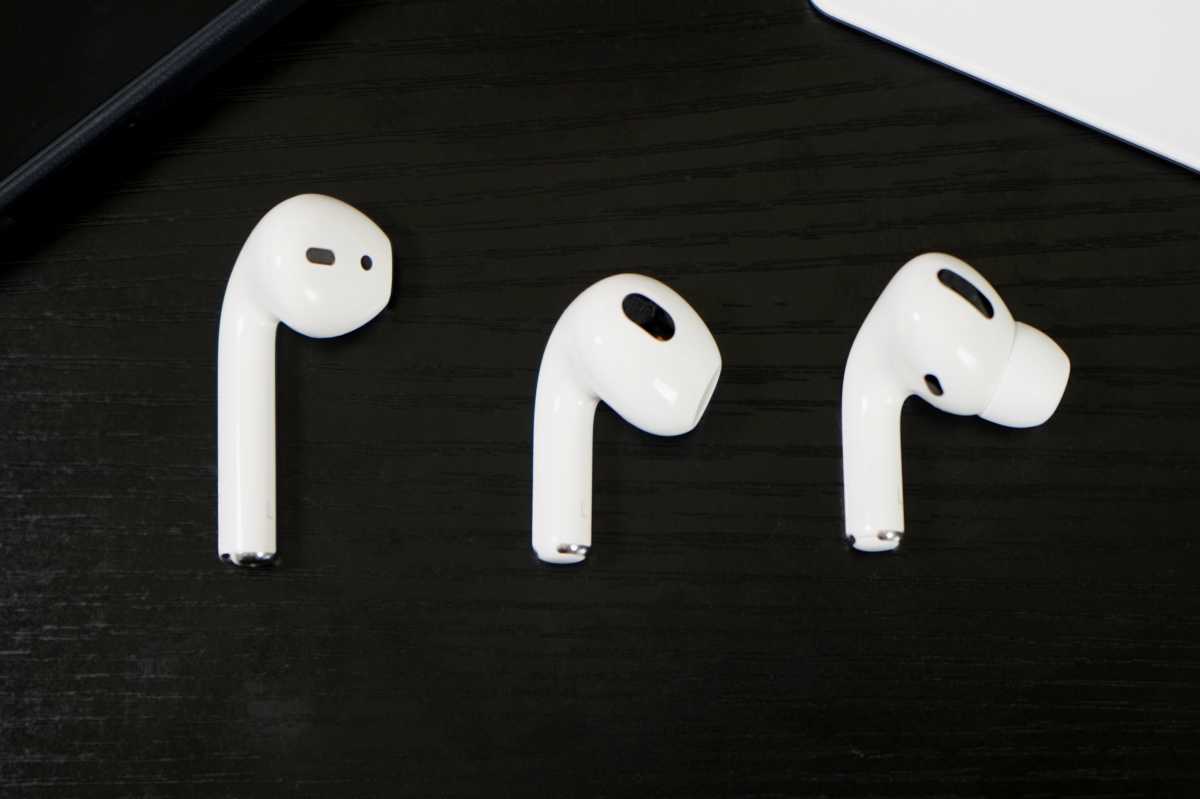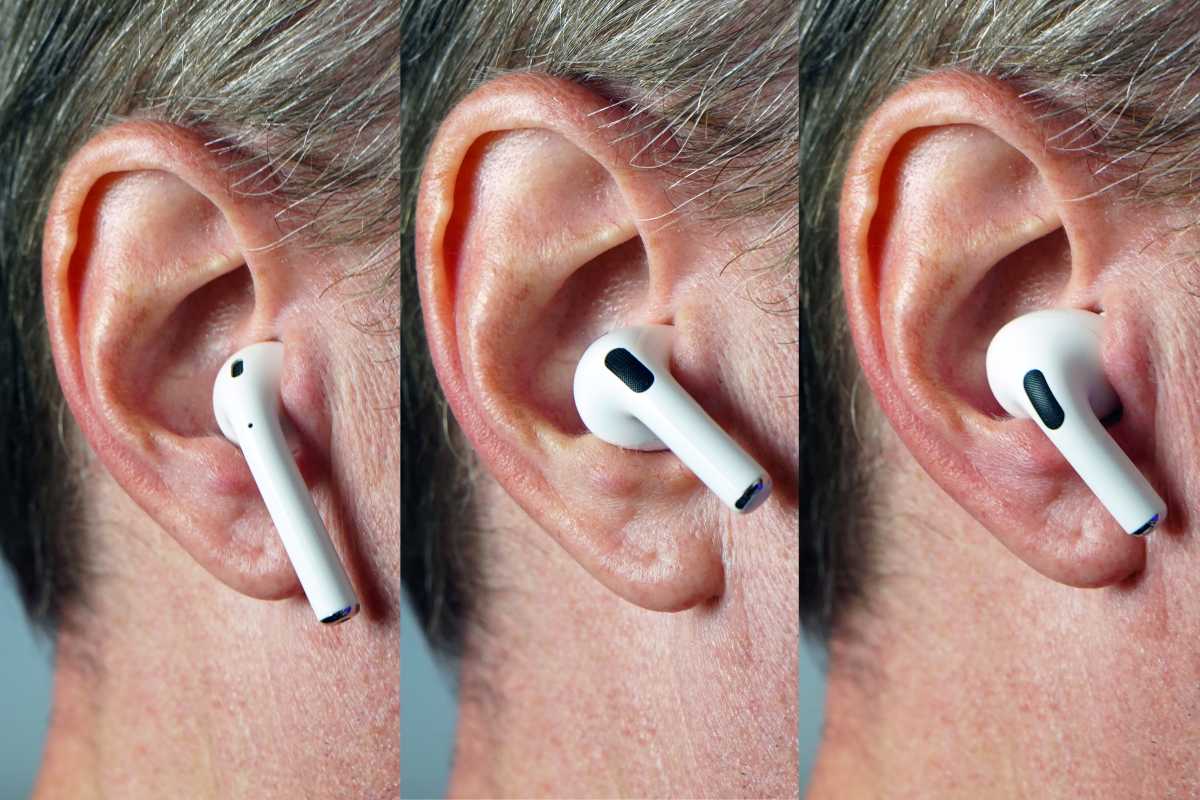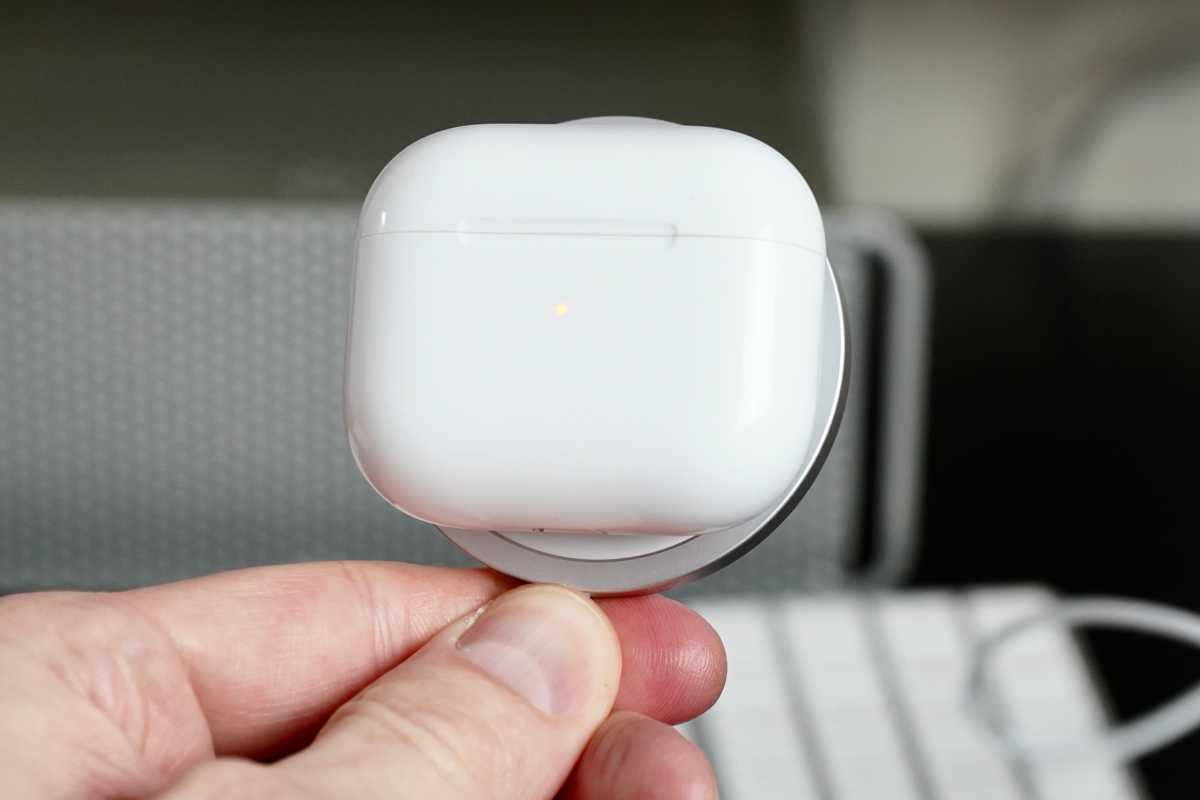AirPods (3rd generation) review: The upgrade we’ve been waiting for
[ad_1]
At a glance
Expert’s Rating
Pros
- Shorter stems
- Water- and sweat-resistant
- Greatly improved sound quality
- Longer battery life
Cons
- Fit is highly dependent on your personal ear shape
- A bit pricey
Our Verdict
The improved sound quality and battery life alone are reason to prefer third-generation AirPods over the second generation, but the design will be an improvement for some users, too.
Price When Reviewed
$179
Best Prices Today

$174.98
Free

$179
We’ve been waiting for Apple to release an update to its basic AirPods for quite some time. First released five years ago, AirPods have become a huge hit and nearly ubiquitous everywhere you see in-ear wireless earbuds, but the second-generation update two years ago left much to be desired—it improved battery life and added hands-free “Hey, Siri” support and not much else.
AirPods Pro are a wonderful step up from basic AirPods, but the $250 price is out of reach for many.
Now we have the third-generation AirPods. Finally, basic and more affordable AirPods bring some of what we love about the AirPods Pro down to a more affordable level. Longer battery life, a more comfortable design with shorter stems, and greatly improved sound quality combine to make this an upgrade worth paying a little extra for.
Big improvements to sound quality
The AirPods’ new look will be the first thing you notice, but the improved sound quality will make the most lasting impression.
Apple uses a new driver in its new design, which makes a big difference to clarity and the “punch” of bass-heavy tracks. You also get software features like Adaptive EQ and spatial audio with head tracking while watching videos in supported apps.
Listening to my playlist of audio test tracks—a diverse set from classical to rock, modern pop to remastered classics—is a totally different experience than it is on second-gen AirPods. I would go so far as to say the new AirPods sound nearly as good as AirPods Pro when you listen in a quiet environment.
In particular, bass response is greatly improved, and overall clarity is enhanced. Busy, heavy tracks such as Foo Fighters’ “These Days” or Mötley Crüe’s “Kickstart My Heart” manage to avoid turning into a muddy mess, which is more than I can say for listening with second-generation AirPods. C Lo Green’s “Bright Lights Bigger City” keeps its clean stereo separation and holds on to those subtle background crowd noises, both of which are easily lost on lesser earbuds.
Spatial audio is a treat when it’s well-supported. On stereo tracks, enabling the feature in Control Panel (long-press the volume slider) definitely provides a more open sound space, but can sometimes lose subtle cues. Tracks mixed in Dolby Atmos, of which Apple Music now has quite a few, sound fantastic.
Spatial Audio adds a whole new sense of space and position to surround-sound movies and TV shows. If you use AirPods to watch streaming video, third-generation AirPods are a massive improvement over the second generation for this reason alone.
A new design, a different fit
It’s no stretch to say that the third-gen AirPods look like the AirPods Pro. The short stems and large black pressure-equalization grilles on both the pod and the top of the stem make them look nearly identical.
The in-ear “pod” itself is reshaped, less round and more bulbous, similar to the AirPods Pro but without the rubberized tip.

Jason Cross / IDG
Regular AirPods have a fit that is best described as personal. Some people find them comfortable, and they stay put easily. Others, like me, find that while the size and weight is quickly forgotten, the rigid plastic and shape don’t like to stay put in my rather small ear canal. I’m constantly adjusting second-gen AirPods as they worm their way loose bit by bit, whether I’m just walking, working out, or even sitting in a chair if I make a lot of jaw movement.
The third-gen model fits differently but I wouldn’t say it’s necessarily better. I still have problems with earbuds slowly working their way free, just as before, though your mileage will vary depending on your ear shape. I suggest trying them on before you buy, if at all possible.
The shorter stems are nice, and help reduce incidents where they get caught on a hat or strap or bumped free. Apple has replaced “tap” controls with the “squeeze the stem” force sensor as found on the AirPods Pro. It gives you a little more control but, as ever, I find it hard to use without messing up the AirPods fit in my ear. I generally control them either through voice or the controls on my iPhone or Mac.

Jason Cross / IDG
There’s certainly no way in which I feel that the third-gen AirPods are a worse design than the second-gen, and the shorter stems and water/sweat resistance are both improvements I can appreciate. But as with the second-gen model, the shape of your ears will determine just how secure and comfortable the fit is.
Battery life and charging case
Apple promises that the battery will last up to six hours, and that seems a pretty accurate claim. I managed to get just a bit more than that on a full charge, but volume plays a factor, and you can expect less when using spatial audio, too. These are the longest-lasting AirPods you can buy, though you can buy wireless earbuds with longer battery life (they are usually larger, though).
The charging case, which looks very much like that for the AirPods Pro but is just slightly less wide, holds another 4 full charges, so you can juice up the earbuds several times before you have to find a plug.

Jason Cross / IDG
Speaking of finding a plug, the charging case supports charging via Lightning or Qi wireless charging and has magnets to attach to MagSafe chargers.
Apple claims that about five minutes in the case will give you enough charge to last for an hour, just as with the AirPods Pro. In my testing, the buds went from zero to over 30 percent in that short time and lasted almost 90 minutes before dying.

Jason Cross / IDG
Which AirPods should you buy?
Apple sells three AirPods now. The second-generation are still on sale for $129 with a wired case. The new third-generation will set you back $179. This is more technically more expensive than the second-gen’s starting price ($159), but the wireless charging case used to set you back $199, so they’re also technically cheaper.
The seal you get from the rubberized tips on the Pro improves bass response and helps reduce outside noise, while active noise-cancellation makes listening in all but the quietest environments a lot more pleasant. For those reasons, those looking for the best sound quality should still choose AirPods Pro.
I feel the longer battery life and vastly improved sound of the third-generation, along with Spatial Audio support, make them worth the upgrade price. If you have a choice, get these over the second-gen model, even if you pay more.
But the AirPods Pro, at $249, are still my personal choice. Active noise cancellation simply makes a huge difference in providing a comfortable listening environment, and the rubberized tips go a long way to making them stay put in my ears better.
AirPods are often found on sale if you shop around. My recommendation would be price-conscious buyers get the third-generation AirPods and skip the second-gen model, and those who can afford to go for the Pro model do so without hesitation. No matter what you buy, look for a sale. After they have been on the market for a few months, AirPods are often available for $20-40 off.
I have written professionally about technology for my entire adult professional life – over 20 years. I like to figure out how complicated technology works and explain it in a way anyone can understand.
[ad_2]
Source link







